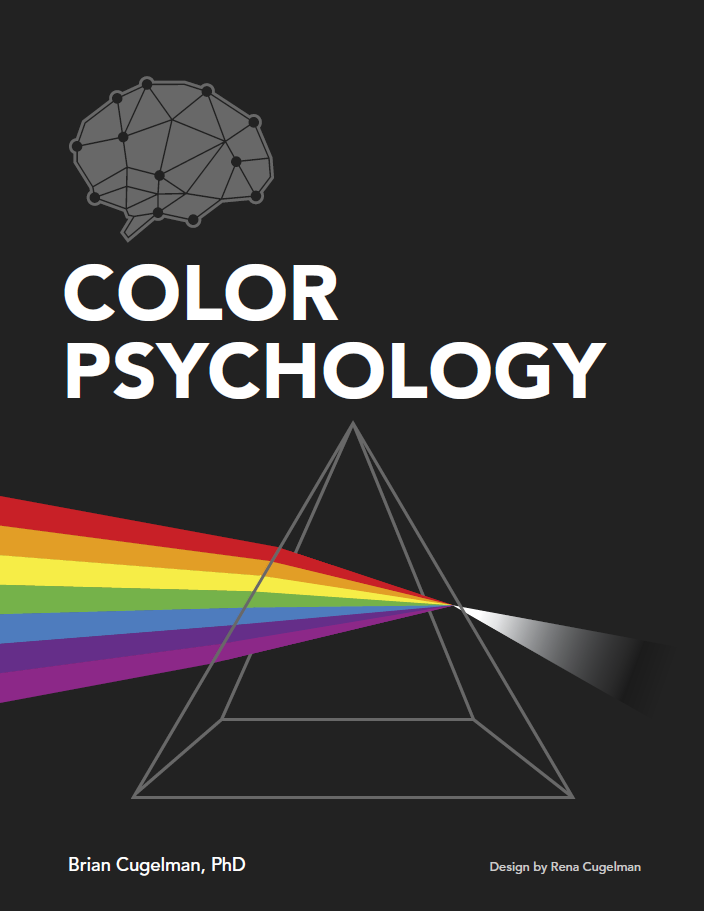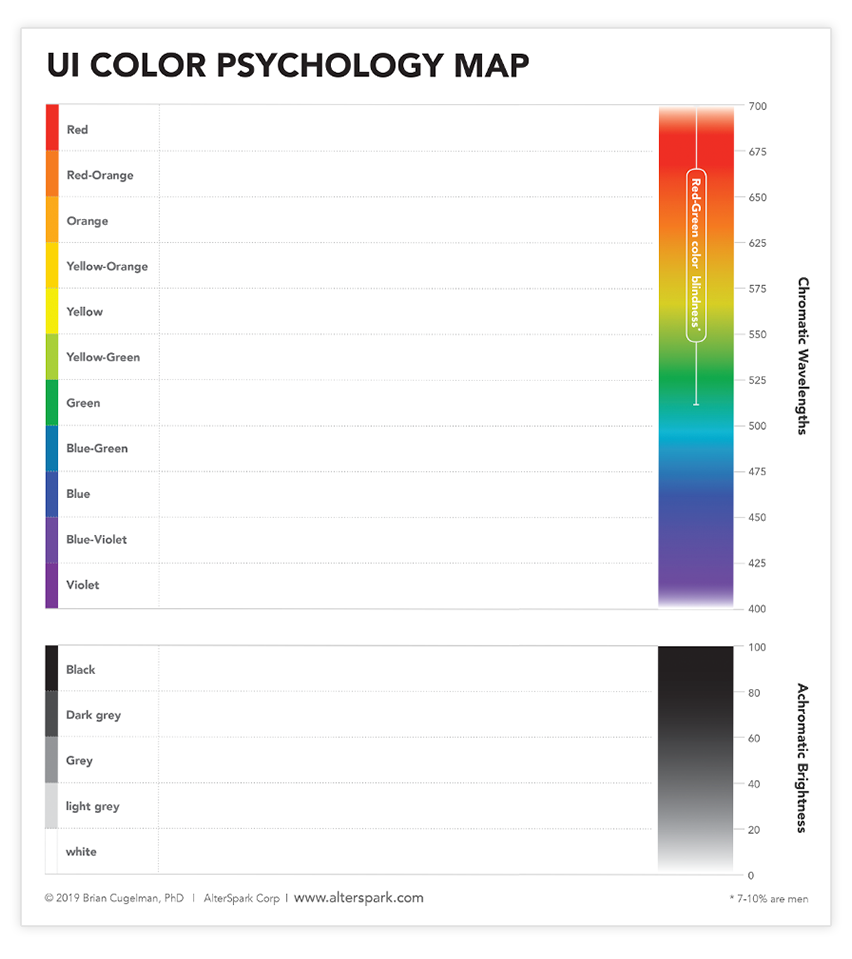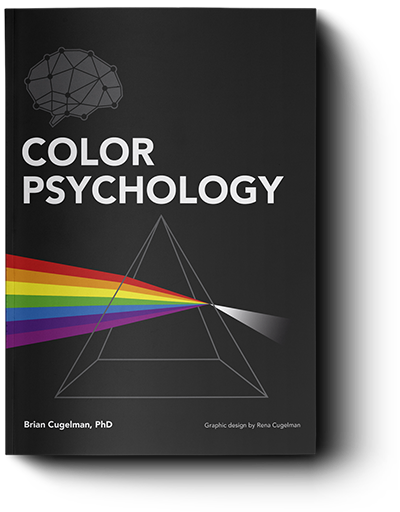Meaning of color
Humans are pathological classifiers. Categories shape how we perceive the world. We think in categories. Categories trigger our emotional reactions. The more we learn in life, the more we create new categories that transform our world view.
So how did we reach the point where certain colors come with categories? Why do some people claim that green means envy, or red means passion? The whole debate on the meaning of colors is actually a debate on cognitive associations to color, or in other words, what’s the first category that comes to mind when you look at any color?
In this section, I’m going to discuss how different cultures conceptualize color, and then get into the leading theories on color meanings.
Cultural and color perception
People who speak different languages often refer to different wavelengths when they describe similar colors. In the English language, we use the word “red” to describe 650-700 nanometers on the visible light spectrum. However, another culture may refer to “red” with 625-700 nanometers.
Depending on where a culture defines color wavelength ranges, this will impact speakers’ memory, ability to learn, and ability to contrast different colors. What this means is that the more you use colors that are central to a culture’s color words, the easier it will be for these people to process and remember your colors.
This provides an explanation for the underlying differences in color palette that vary from culture to culture. It also explains why you should be culturally sensitive when doing any international or culturally focused design.
Learned associations
In this section, I’ll explain how groups develop emotional associations to colors.
Imagine a society where on TV, the baddies wear green uniforms; and the good guys wear red uniforms. After 15 years of green baddies and red-shirted goodies, the culture may start to develop an emotional co-association between green-bad and red-good.
However, we form stronger memories from events that have stronger emotional valence. In other words, we remember the best parts and the worst parts of life more than the routine parts.
So if a criminal gang rolled into town, and they happen to be wearing green, then the color green may become co-associated with an intense dislike. But if it’s a brutal green-shirted militia that besieges our city during a civil war, raping, torturing, and victimizing citizens, then green can burn into some citizen’s long-term memory as an extreme anxiety trigger.
We call the process of associating anything with a reward or punishment, reinforcement learning. We can associate any color with a reward or punishment, causing color to evoke positive or negative emotions. In other words, a color associated with punishments will eventually evoke a threat response, while a color associated with rewards will start to evoke an opportunity response.
Another way of explaining how color shapes emotion, is through an associative memory network. Here’s how it works. When you look at a photo with lots of green, those green colors trigger millions of memory circuits with related concepts, emotions, and sensory experiences. While your brain works to classify the image, it activates emotional responses based on past associations, while working to come up with the best classification of the experience. The net effect is some level of emotion is triggered by each experience. Many researchers use associative memory networks to explain the unconscious impact of color associations.
The critical point here is that there can be individual, group, and cultural co-associations with color. All those claims about universal color meanings should always be taken with a massive dose of skepticism. If there is any merit to the research, it’s likely to only apply to a certain population, over a certain period of time. It’s best to run your creative work by members of your target audience or user group.
Applying emotional associations
How do we use color to evoke the right emotional tone in any communication? Let’s start with a theoretical example of using color to target status-oriented emotions.
Imagine a culture where the color purple is associated with higher status, and the color grey is associated with people of lower status. Next, rub some of that high-status purple on your logo, and voilà—you have a purple logo with high-status connotations. Rub some of that low-status grey on the attack ads of your political opponent, and Bob’s-your-uncle—you’ve created a slanderous campaign.
For most of humanity, color co-associations change over time. This explains why colors come into, and go out of fashion. Want to be cool? Rub some of that in-group color palette on you, and you’ve instantly made yourself look like a card-carrying member of the tribe.
If you have the money and staff stay on top of color trends, I say go for it. However, if you want your designs to have a longer shelf life, opt for more neutral colors and whites.
Applying cognitive associations
Another type of association is cognitive association, which is concerned with the intellectual understanding of a color. In other words, does the color help users to understand something?
When it comes to navigational systems, I use color to train my users on how to use my interface. I want them to make associations like color-A produces outcome-A, and color-B conveys information-B. I want them to know that color-X indicates the most important task, while color-Y is less important.
Earlier, I said that I didn’t know of any universal color associations to emotion. However, there is one global association to cognition. Thanks to the Vienna Convention on Road Signs and Signals, most of humanity use the same traffic sign colors. Across the planet, most of humanity knows that red means stop, orange/amber means get ready to stop, and green means go.
If your color options allow you to build on these associations, I advocate using them for the simple reason that you’re not going to have to spend much time teaching your users their meaning. It’s easier to build on pre-existing associations than to establish new ones.




